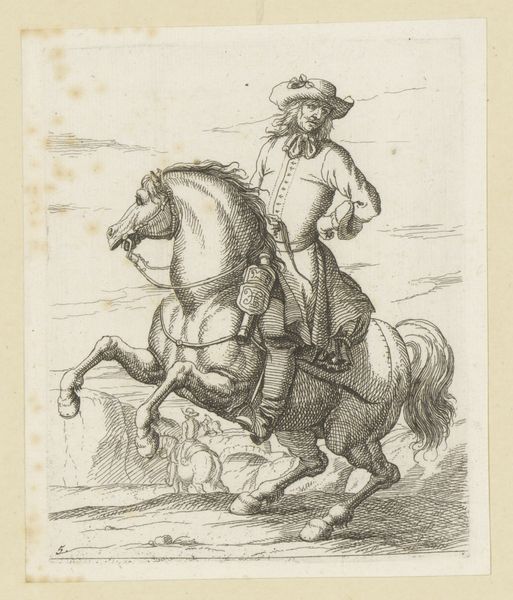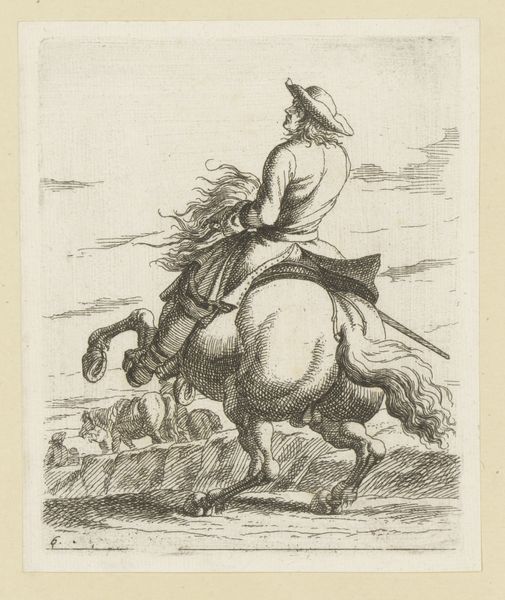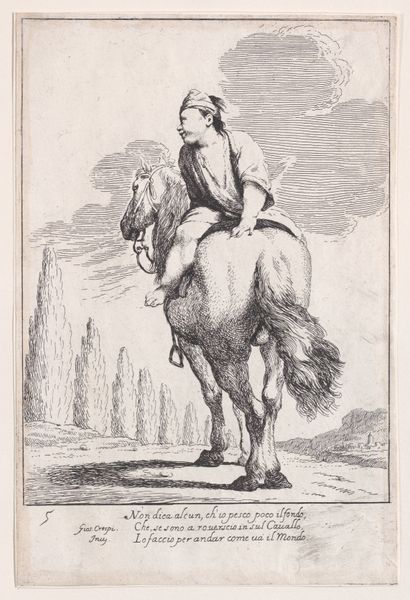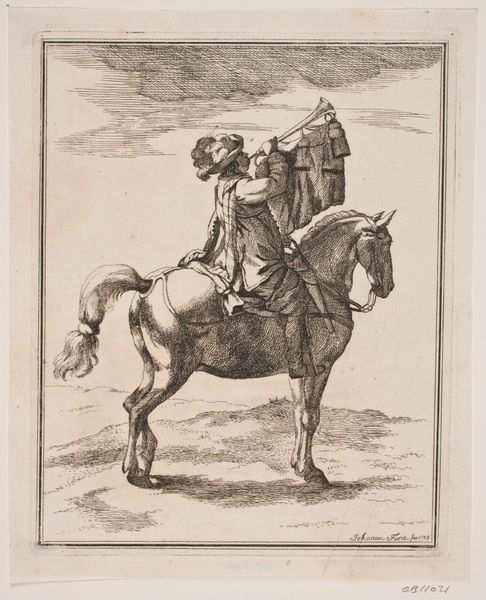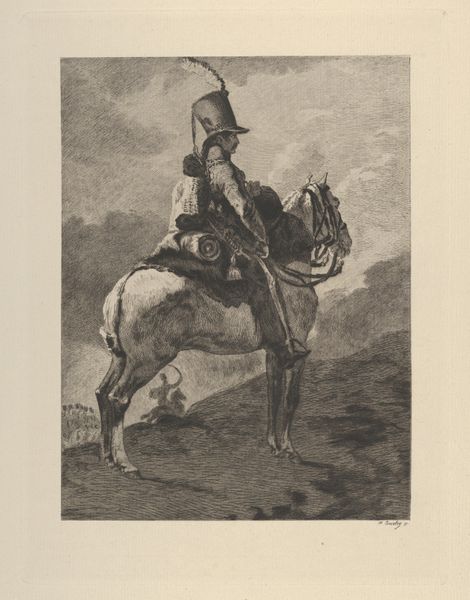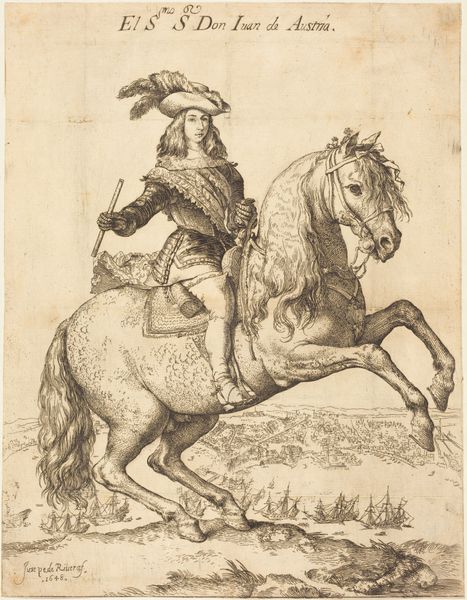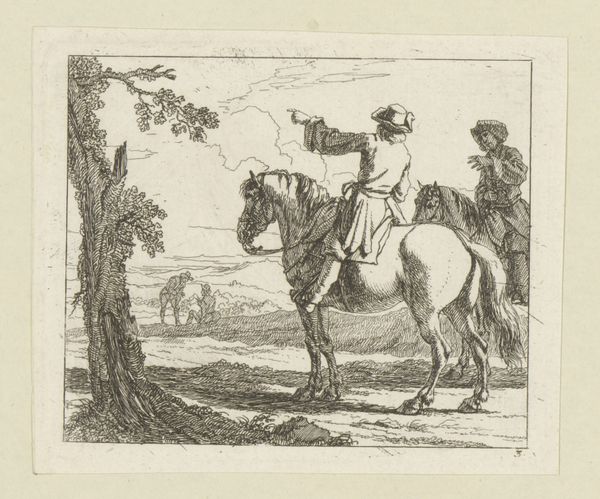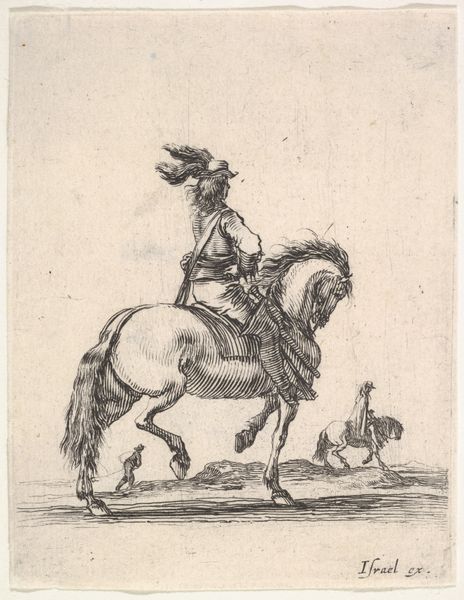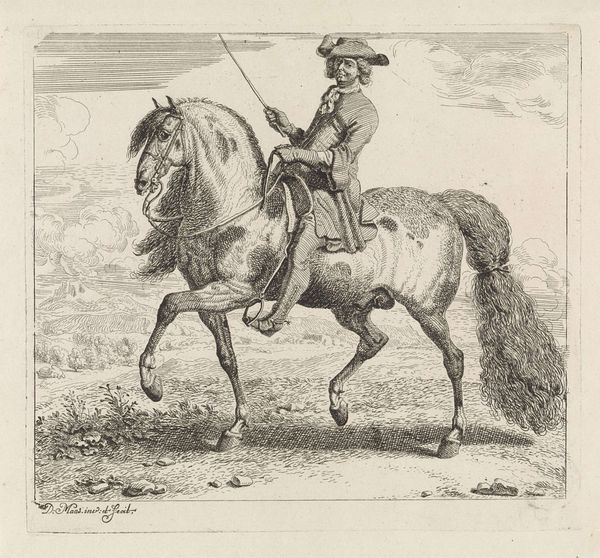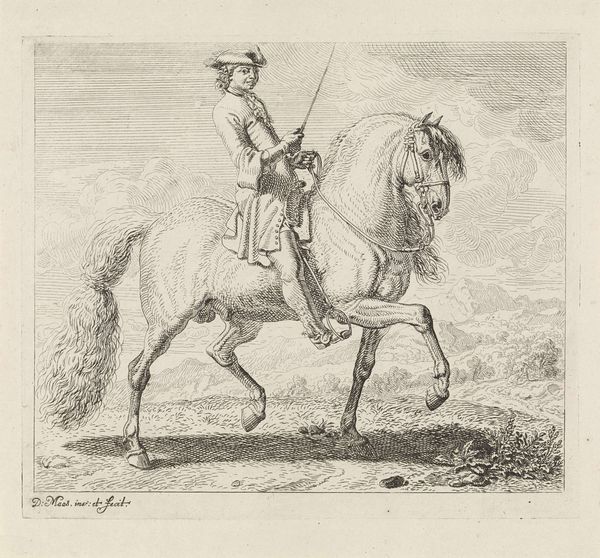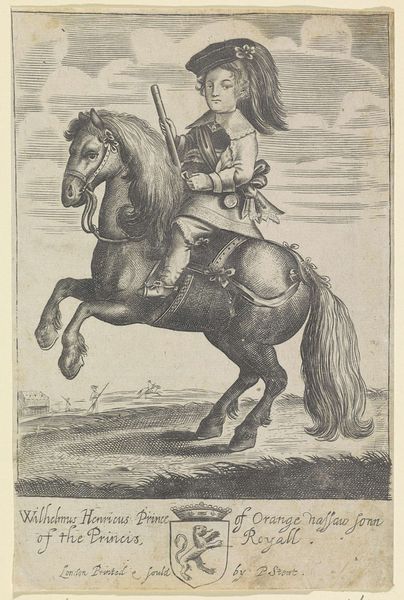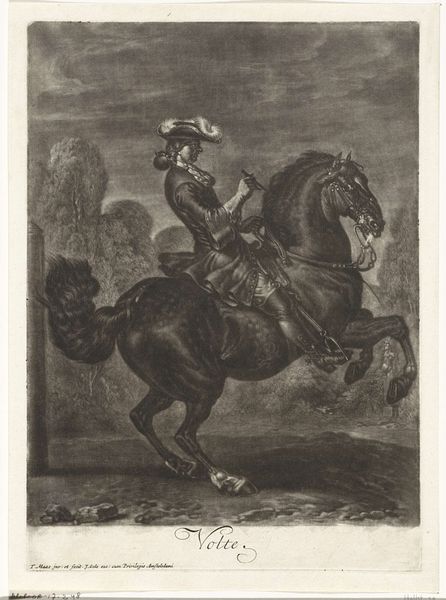
print, engraving
#
portrait
#
baroque
# print
#
figuration
#
line
#
history-painting
#
engraving
Dimensions: height 194 mm, width 153 mm
Copyright: Rijks Museum: Open Domain
Editor: Charles Parrocel's "Ruiter," dating from around 1700-1750, is an engraving now at the Rijksmuseum. There's a formal air, an almost staged feel, despite it showing a rider in what looks like an open landscape. What's your read on its historical context? Curator: Well, what immediately strikes me is the way Parrocel is participating in the construction of an idealised military persona. Prints like this circulated widely, shaping public perception of leadership. Think about the role of prints in disseminating political messages and constructing heroic narratives, especially at a time when literacy was not widespread. How do you think this particular image might have functioned? Editor: Perhaps it's meant to inspire confidence, or even glorify a certain type of leadership associated with a specific social class, rather than the depiction of a real individual? Curator: Precisely. Look at the subject's assured pose, the magnificent horse. It's a deliberate attempt to present authority. We should also consider the distribution networks for prints; they were commodities, circulated among specific social groups, and therefore reinforce social power and structure. Editor: That makes me consider where prints like these would have been displayed. Were they accessible to a broad public or primarily consumed by the elite? Curator: The intended audience heavily influenced the production and distribution of these works. These images probably reinforced the social hierarchy for those in power, shaping popular imagination through the circulation of approved narratives. Editor: That sheds a whole new light on the artwork for me! I’d previously overlooked how the dissemination context impacts how one views it. Curator: Exactly. Reflecting on it, understanding art always means accounting for its creation, circulation, and impact on different layers of society.
Comments
No comments
Be the first to comment and join the conversation on the ultimate creative platform.
